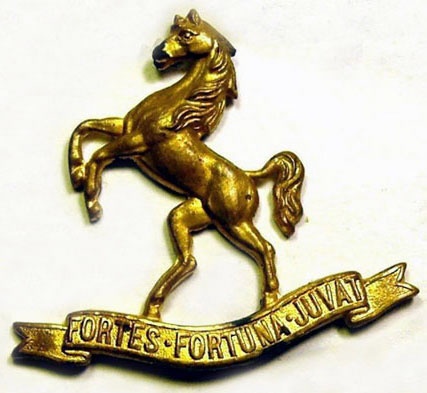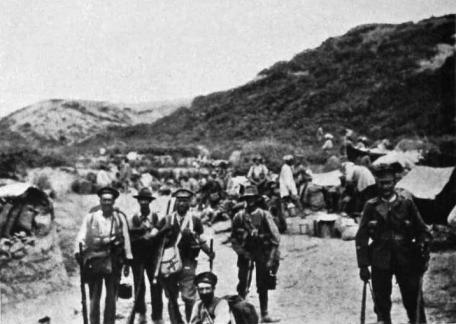SAMUEL SMITH written by Linda Trim
Samuel signed up to the Royal Naval Volunteer Reserve, but found himself alongside other Navy recruits fighting on the Somme with the Army.

Deeside Advertiser February 2nd 1918
SAMUEL SMITH written by Linda Trim
Samuel signed up to the Royal Naval Volunteer Reserve, but found himself alongside other Navy recruits fighting on the Somme with the Army.

Deeside Advertiser February 2nd 1918
REGINALD CHARLES DREAPER
Dreaper is a very unusual surname. I have not been able to find it either in The Oxford Dictionary of English Surnames or on the online British Surname Profiler, which did not have any data for the name at all. It seems probable that it is a variation of Draper and therefore is of Anglo-Saxon origin and means “a purveyor of cloth”. Bearers of that name settled in Ulster in the 17th century. As will be seen below, Reginald did have Irish ancestry, so this interpretation would make sense. (Stephen Roberts)
Reginald Charles Dreaper is the only man with a West Kirby connection who served in the New Zealand Armed Forces. He was born in the spring of 1885 in Freshfield, Lancashire, the third child and second son of George Hotham Dreaper (1839-1894) and Louisa Mary Ann Plank (1858-1943). His siblings were Clarissa Hotham Dreaper (1881-1960), George Porter Dreaper (1883-1913) and Gladys Henriette Dreaper (1887-1961). His story really starts with the arrival in Liverpool of his grandfather William Porter Dreaper (1804-1882) from Waterford in Ireland.

William Dreaper Porter was a very successful man who usually called himself a music seller, but in reality made and sold pianofortes, harmoniums etc. His workshop was in Bold Street, Liverpool. According to the Hereford Times of 30 May 1846 he had a showroom above some workshops on the corner of Shaw Street and Wood Street, with about 60 pianos on display. In that month one of the premises below caught fire, the building was destroyed and only 5 pianos were rescued. He was believed not to be fully insured. At the time he was in Paris, so presumably his business was international. This major setback did not defeat him, and on 21 May 1861 he was granted a patent for an improvement to pianofortes.
William Porter Dreaper had 3 sons all of whom joined him in the business. The middle son John Shaw Dreaper (1834-1899) left to became a commission agent in Lambeth, London. The eldest William Henry Dreaper (1833-1895) and youngest George Hotham Dreaper, Reginald Charles’ father, took over the business in the 1870s as William Porter Dreaper had become insane and was committed to an asylum. However the sons evidently did not have the abilities of their father. When William Porter Dreaper died in 1882 he left over £14,000. All three sons died between 1894 and 1899 and none of them left more than about £1500, George Hotham Dreaper leaving the least. We know from the following:

that all William Porter Dreaper’s money went to his widow with reversion to his sons. His widow Henrietta Catherina Pinch (1812-1893) died before any of her sons and left less than £1000. So William and George seem to have run the business at a loss.
By the time Reginald Charles Dreaper was 7 years old, the family had moved to 31 Westbourne Road, West Kirby and his father and paternal grandparents were dead. Both his paternal uncles died by the time he was 14. Up to this time George Hotham Dreaper always employed at least one servant. His maternal grandparents were John George Ward Plank (1826-1871) and Clarissa Pickford (1832-1900). Both were Londoners and J G W Plank worked as a clerk for HM Customs. Although they had a very large family and always employed a household servant, John George Ward Plank did not leave enough for probate. By 1901 his mother had moved the family to 12 North Road, West Kirby, and Reginald Charles was working as an insurance clerk.
In 1908 he decided that office life was not for him and emigrated to New Zealand. He travelled first class from Liverpool to Wellington on the SS Fifeshire, leaving on 2 May. By 1911 he was a farmer living at Erepeti, Upper Ruakuturi Valley, Wairoa, Hawkes Bay in North Island, New Zealand. Presumably he was farming sheep. It seems to have been many generations since any member of either side of his family worked on the land in any capacity, so it would be interesting to know how he managed to acquire the necessary knowledge.Today there is no settlement at Erepeti, and the upper part of the Ruakuturi Valley is known for trout fishing and scenery. In 1913 his brother George died, having been reasonably successful as a timber merchant as he left over £1600 and was only aged 30.

Reginald Charles Dreaper joined up quite early once war was declared as he was part of the second draft of the New Zealand Expeditionary Force which left New Zealand on 14 December 1914. He was a trooper in the Wellington Mounted Rifles.



He was part of the ANZAC force at Gallipoli where he was severely wounded by shrapnel, dying on 11 July on board a hospital ship at the age of 30. He was buried at sea. He is reported as being ‘a man of very splendid physique and a very genial disposition’.

He seems to have had no-one in New Zealand to look after his affairs as the attorney of the Public Trustee of New Zealand was granted administration of his probate in England in 1921. He left £312 in England. He is commemorated on panel 72 of the Lone Pine Memorial at Gallipoli, Turkey.

And also on the family grave at St Bridget, West Kirby, which is somewhat neglected.
Notes:
Birth: Apr 1885 at Freshfield, Lancashire
Death: 11 Jul 1915 at sea of wounds received at Gallipoli
Addresses: 2 Mount Pleasant Road, Liscard (91); 12 North Road, West Kirby (01); Erepeti, Upper Ruakuturi Valley, Wairoa , Hawkes Bay, New Zealand (11) (14)
Occupations: Insurance Clerk, Farmer
Unit: Wellington Mounted Rifles, New Zealand
Number and Rank: 11/757; Trooper
Medals: 15 Star, Victory and British War (all assumed)
Commemorated: Turkey : Lone Pine Memorial, panel 72; St Bridget’s Church Yard, West Kirby
Sources: GH, WK, CWGC, DA, Census: 91, 01, NZ Army Rolls, Probate, NZ Electoral Rolls and New Zealand History Website
James Rainford Norman was born on 7 September 1896 in West Kirby, the 2nd son and third child of George Norman (a bricklayer) and Mary Ann Rainford. In all they had 8 children, 2 of whom died in infancy. He was baptised into the Church of England at St Bridget, West Kirby on 19 Nov 1896. His father came from Neston, but his mother was West Kirby born and bred. His mother’s youngest sister Jane Rainford married Frank Lunt, brother of THOMAS LUNT.
James was not the only member of his family to serve in WW1, as this photograph which includes both his older brother Gordon and his ‘uncle’ Frank Lunt shows.
James Rainford Norman’s Brother Gordon Rainford Norman and Friends in the “West Kirby News”. Tom Rainford was his second cousin once removed.
The family moved around West Kirby quite frequently as in 1901 they were living in Acacia Grove, in 1911 at 10 Westbourne Road and on his enlistment in the Royal Marines on 30 November 1914 at 13 Brook Terrace.On his enlistment he lied about his age, claiming to have been born in 1895. In fact he was just 18 years old. At the time he was a builder’s labourer.

His record describes him as 5ft 6 in tall, with a fresh complexion, grey eyes and brown hair. Throughout his service his conduct was ‘very good, whilst his ability improved from moderate to satisfactory.
Having joined the Royal Marines in Liverpool he was posted to the Plymouth Battalion of the Royal Marines Light Infantry. After training he left Gosport on 16 April 1915 for Gallipoli, where he was wounded 3 times, including a gun shot wound in his right arm, by 31 July 1915. On 1 Jan 1916 the Plymouth Battalion was merged with other units to form the 2nd ‘Hawke’ Battalion. On 27 January 1916 he had recovered from his wounds and rejoined his Battalion in France.
On 10 July 1916 he is recorded as having rheumatic fever, and on 31 August 1916 he was killed in action between Arras and Bethune.

As well as his actual grave he is commemorated on his parent’s grave at St Bridget, West Kirby.
Notes
Birth: 7 Sep 1895 at West Kirby
Death: 31 Aug 1916 in Pas de Calais, France; killed in action
Addresses: Acacia Grove, West Kirby (01); 10 Westbourne Road, West Kirby (11); 13 Brook Terrace, West Kirby (14)
Occupation: builder’s labourer
Unit: 2nd Battalion, Royal Marines Light Infantry
Number and Rank: PLY/594/S; Private
Medals: 1915 Star, Victory and British War
Commemorated and Buried: WK, GH, St. Bridget’s, France : Tranchee de Mecknes Cemetery, Aix-Noulette
Sources: BR, CWGC, SDGW, SR, Medal record, BN, Census: 01, 11, PR, BR